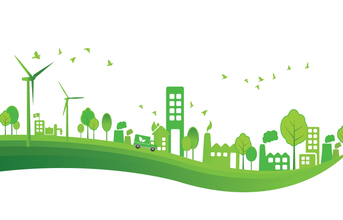
Godrej & Boyce as well undertakes monitoring processes regularly. "We have set indicators for monitoring performance in key areas like energy consumption, CO2 emission, water consumption and waste generation. Monitoring, variance analysis and review of these indicators helps control consumption and identify more opportunities for improvement in these indicators," Marolia mentioned.
In addition to the performance monitoring, peer-to-peer comparison and external benchmarking is also crucial in order to improve the past performances and implement others best practices. "In this regard, we follow universally accepted reporting practices of Cement Sustainability Initiative (CSI) and disclose our sustainability performance as per pre-defined indicators of CSI for global comparisons," asserted Tripathy.
Looking at the greener future
With these initiatives, Dalmia Bharat has set a target of becoming water positive with specific reference to water consumption in cement plants by year 2017. Also, the company plans to reduce its carbon intensity by 3 percent compared to FY 2014-15 and aims to expand the use of alternative fuels to all cement kilns by 2017.
Speaking on the targets set by Godrej & Boyce, Marolia said, "In line with the Godrej `Good and Green' strategy, the organisation is committed towards reducing its specific energy consumption (energy consumption per rupee of manufactured value-add) by 25 percent, positive water balance, zero waste to landfill, carbon neutral and 30 percent renewable energy share by 2020. Godrej Interio has taken a stretched target of reducing its specific energy consumption by 35 percent and specific water consumption by 40 percent. We have goals for reducing specific hazardous waste by 50 percent and 100 percent diversion of non-hazardous waste from landfill."
To achieve its targets with regard to sustainability, Henkel India is taking steps right from the planning stage of its new plant. "We are setting up India's largest adhesives plant at Kurkumbh.
This plant would be a model for sustainability and efficiency. It will be LEED certified by the US Green Building Council and will follow the highest standards of safety, health and environment. Furthermore, the site will have facilities for rain water harvesting, harnessing solar power and a state-of-the-art waste water treatment plant with a treated water recycle scheme," informed Bandyopadhyay.
Concluding remarks
Looking at the bigger picture, environmentally-friendly manufacturing processes help a company to improve its brand image and use it as a tool of marketing. "Sustainable practices in critical areas of water management ensure the continuity of business. Commitment and work towards reducing environmental impacts build a good social image of business and adds value to brand. Initiatives in reducing environmental impact help in green certifications for products and plants, which become a good marketing tool in promoting greener products and services needed by the consumers," Marolia opined.
However, going green is not a destination but a journey. "Since, the environment impact due to our manufacturing efficiency is minimum. The manufacturing process actually adds value to our end-product and helps us make the most effective use of our raw material, water and power consumption. However, we are still looking at ways to further increase efficiency and set new industry benchmarks," concluded Mati.
END


























